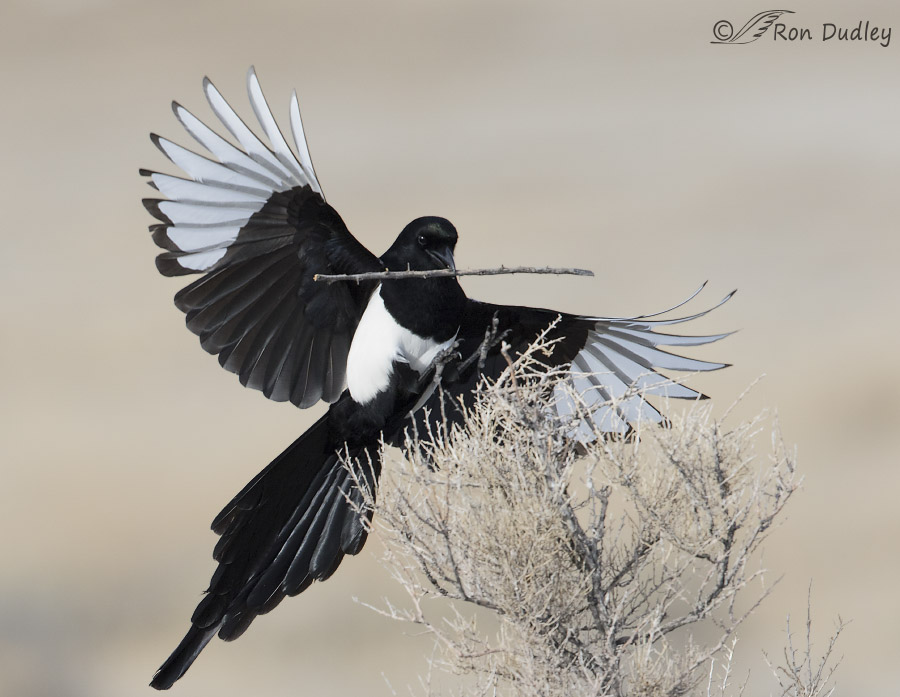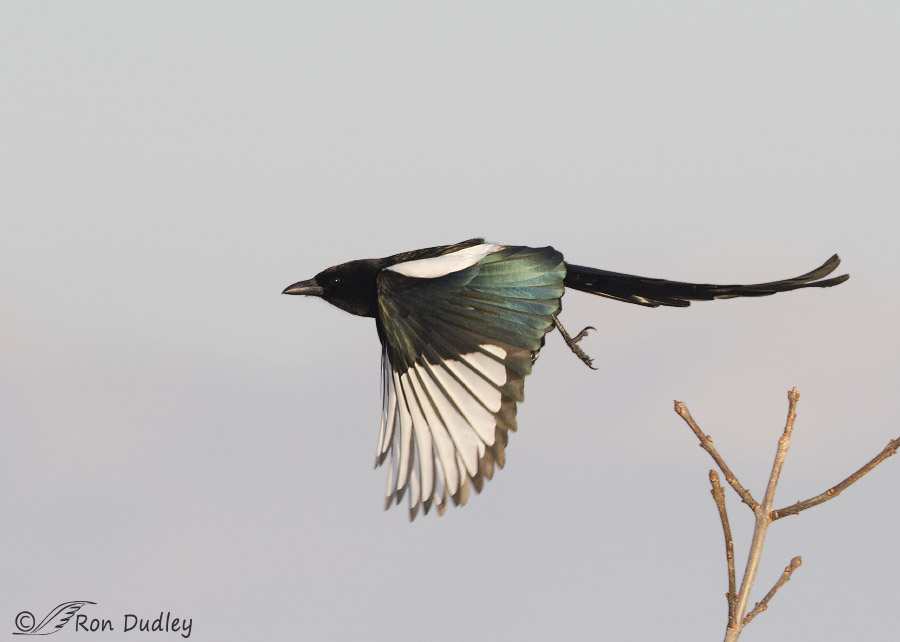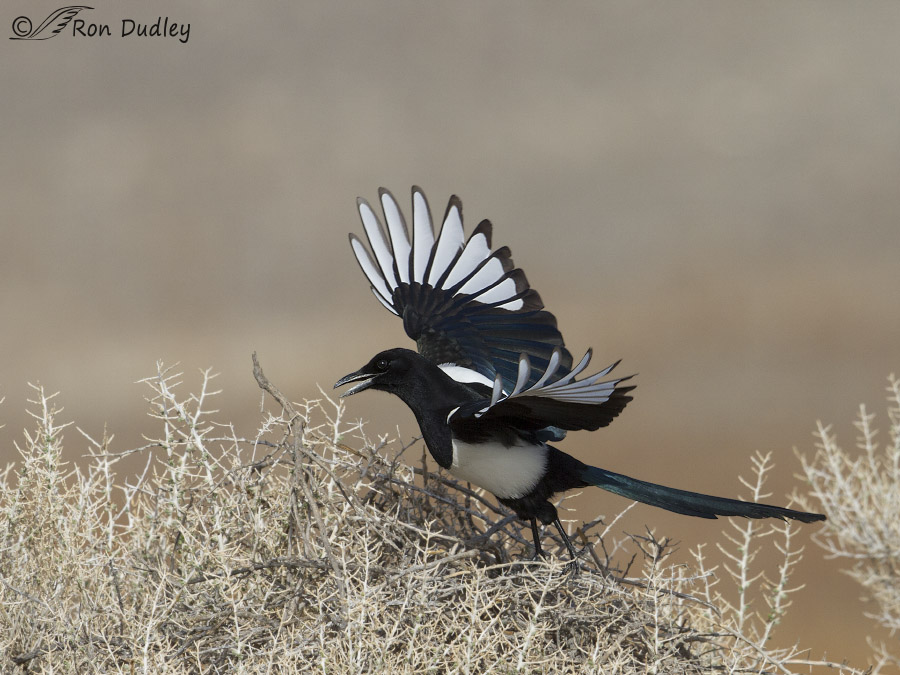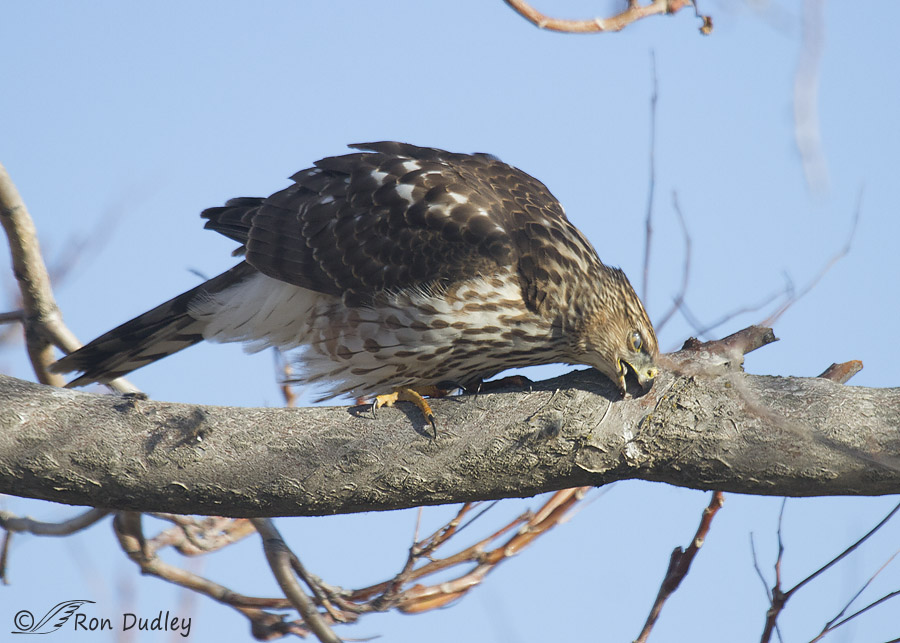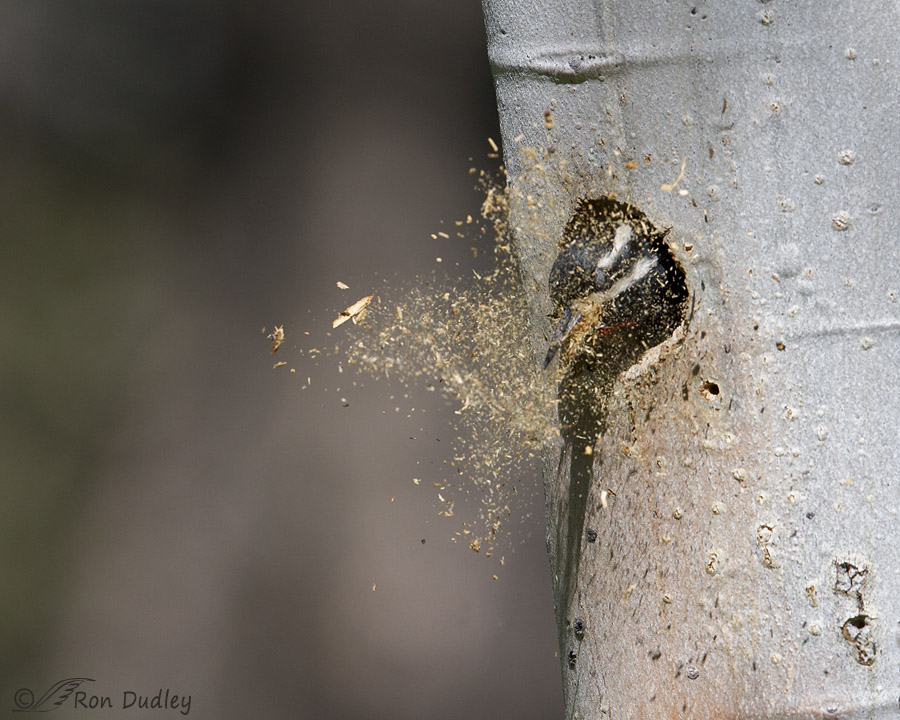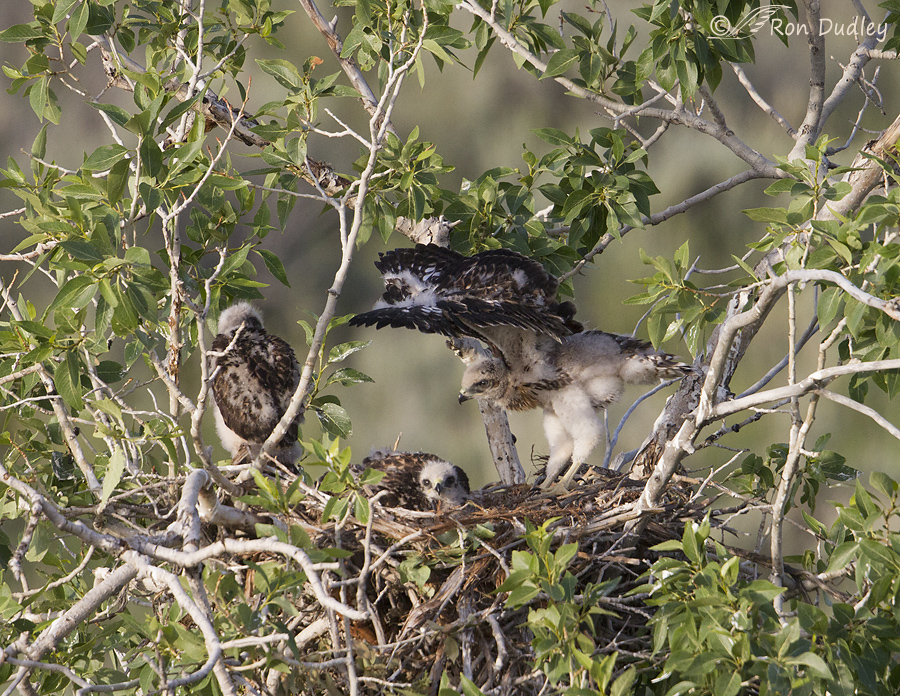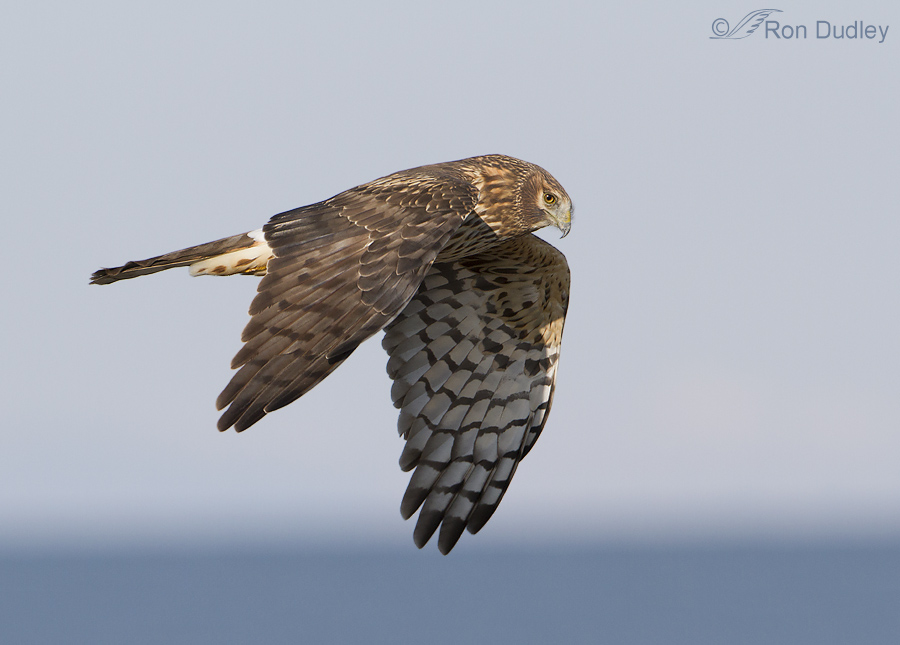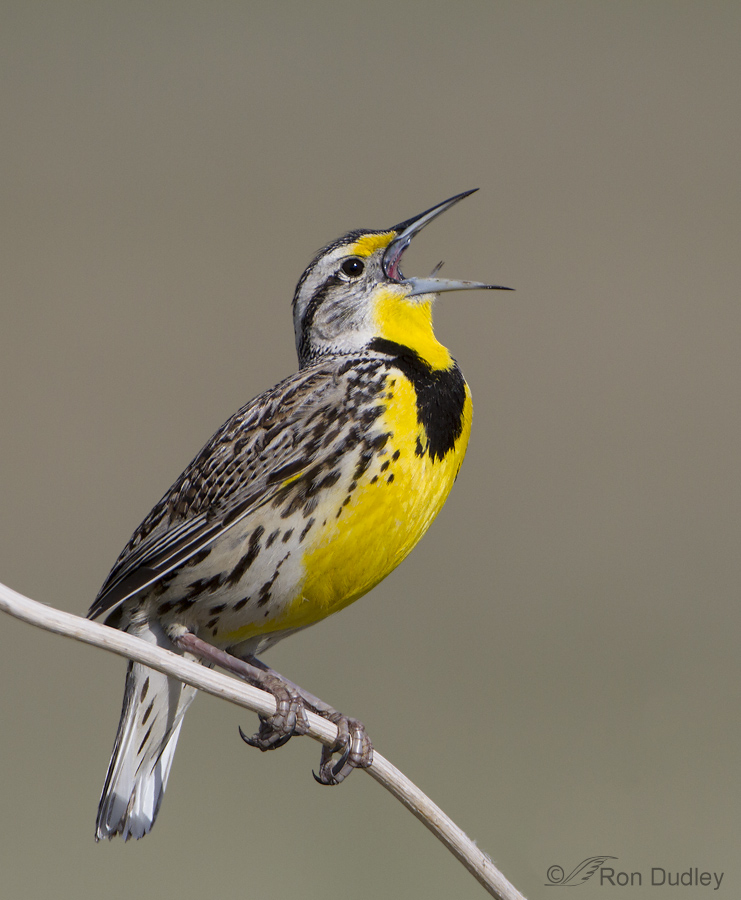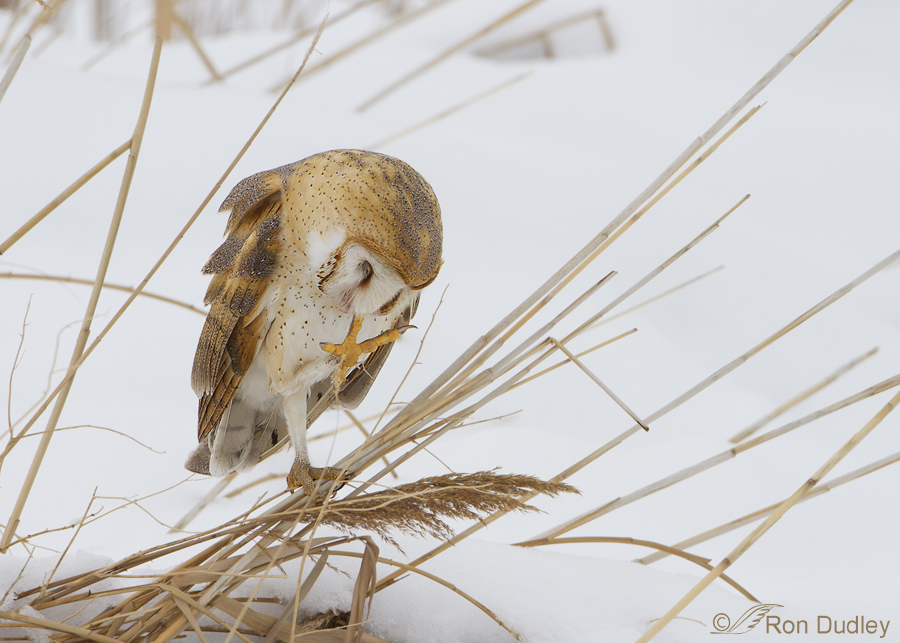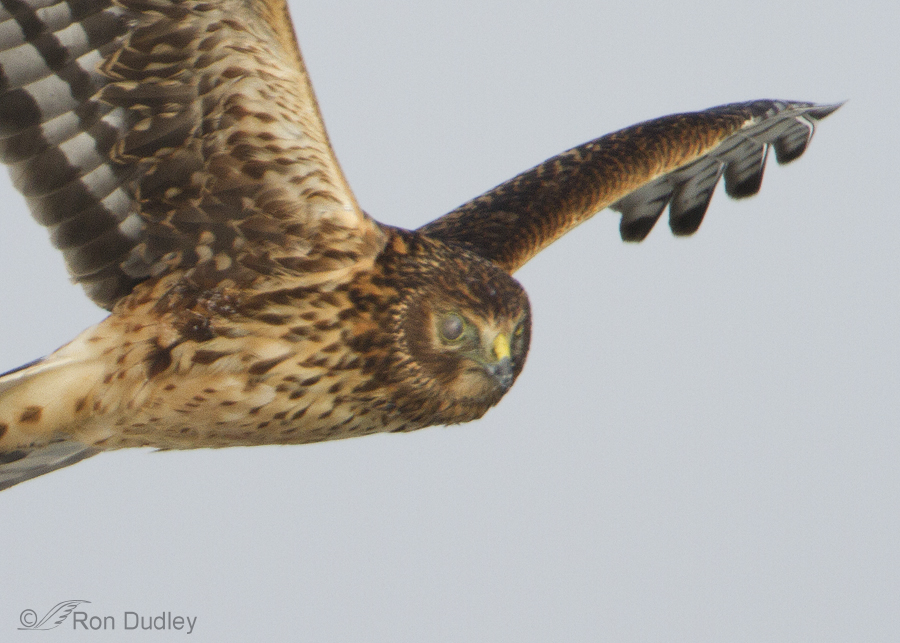Tag: nictitating membrane
Magpie Take-off
Magpie Take-off From Nest Sequence
An Accipiter Preying On Rodents Instead Of Small Birds
Williamson’s Sapsuckers Attending To Domestic Duties
Red-tailed Hawk Chicks (and my emotional attachment to them)
Northern Harrier In Flight Over The Great Salt Lake
Western Meadowlark – The Scars Of Battle
Perched Barn Owl Actually Doing Something
Eye Defects In Raptors
Is A Hawk Capable Of “Planning”?
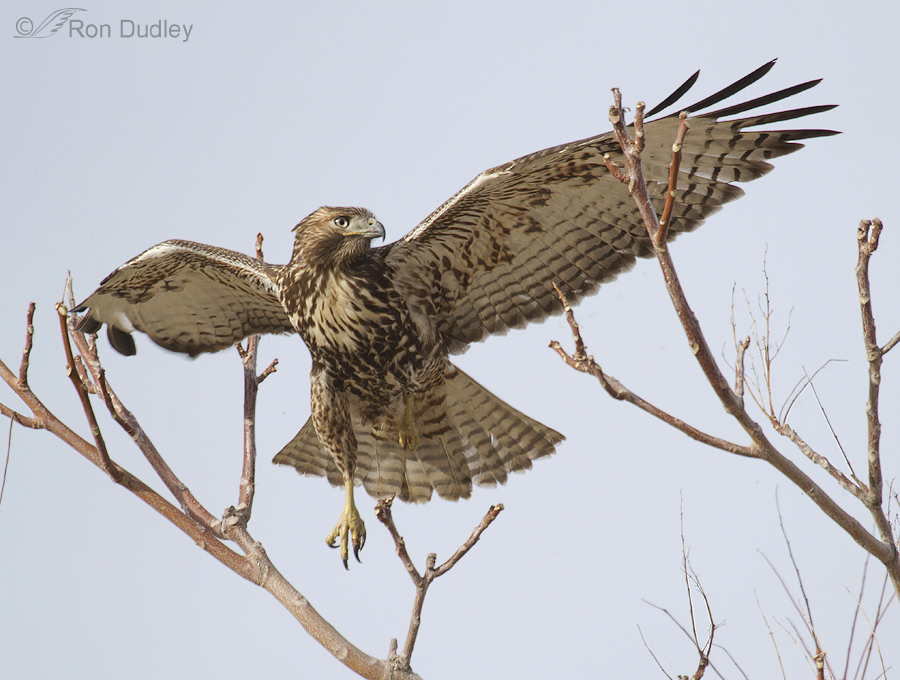
I sometimes see hawks buried so deeply in trees that I can’t help but wonder how they’re going to fly out without injury or at least feather damage. They occasionally appear to “think” about their escape route just before take-off, which implies “planning”. Some images I took yesterday brought the question to mind once again – are hawks capable of “planning”?
A Wet, Winking Great Horned Owl Fledgling
I love the half-closed, fuzzy eyelid and the ear tufts or “horns” that are just beginning to form on this young owl.
Black-billed Magpies Constructing Their Nest
This post is largely about behavior. The image quality ranges from good to mediocre but I think each photo contributes something to a better understanding of magpies. Black-billed Magpies begin nest-building as early as January and these particular birds have been at it for several weeks now. Actually, in this case it’s more a “remodel” than it is “new construction” since this nest has been used for at least the last three years. All of these photos have been taken this week, which accounts for the relatively bright snow and ice background in some of the shots. 1/2500, f/7.1, ISO 500, 500 f/4, natural light One of the first things you may notice is the fact that sometimes these Black-billed Magpies don’t seem to have black bills. Part of nest construction involves mud gathering and the drying mud on the bill can significantly alter the appearance of the bill. 1/2500, f/7.1, ISO 500, 500 f/4, natural light Both sexes contribute to nest construction and they’re quite industrious in their efforts. The size of the twigs they bring in is often impressive. 1/4000, f/7.1, ISO 500, 500 f/4, natural light The nest is buried deep in a greasewood bush at about eye level for me. Typically a bird bringing in construction material will land on a nearby perch and look over the nest for a few moments – seeming to plan placement of the twig and an approach path through the myriad of vertical greasewood stems that present significant obstacles to proper placement of such an unwieldy…
Western Meadowlarks In Snow
Yesterday was a glorious day on the island with about 6″ of fresh snow and wonderful light. It was simply delightful. The Western Meadowlarks seemed to be a little “stickier” than usual, perhaps because of all the snow. 1/3200, f/6.3, ISO 500, 500 f/4, 1.4 tc, natural light This one was half buried in the snow but I liked all the convolutions in the snowy setting. 1/3200, f/8, ISO 500, 500 f/4, 1.4 tc, natural light This meadowlark was the most cooperative bird of the morning as it posed for me for over 6 minutes on top of some rabbitbrush. 1/2500, f/8, ISO 500, 500 f/4, 1.4 tc, natural light It never did turn around to show that bright yellow breast but it did give me some nice head turns to make up for it. 1/2000, f/7.1, ISO 500, 500 f/4, 1.4 tc, natural light Meadowlarks are well-known for a behavior called “tail flashing”, something they often do during territorial disputes. During tail flashing the tail is nervously (and very quickly) snapped open and closed, better revealing the white outer tail feathers. The bird was cooperating so well that I made it my goal to try to catch the tail spread to show those white feathers, which turned out to be much easier said than done. It happens so quickly that you just have to fire a burst and hope for the best. I took 208 shots of this bird (at least half of them were attempts to get the open tail) and only got…
Swainson’s Hawk Regurgitating Pellets
Western Montana has been awash in Swainson’s Hawks this summer. From the Canadian border (Glacier County) to the southern border with Idaho (Beaverhead County) I found them in significantly larger numbers than I have seen in previous summers. I hope this very unscientific observation is accurate and that it bodes them well as a species because their numbers have been declining to the point where they are listed as a Species of Special Concern in several western states. 1/2000, f/7.1, ISO 500, 500 f/4 I found this handsome juvenile this past week along a county road in Beaverhead County. At first it was very relaxed and assumed this clenched fist pose that is so typical of many buteo species when they’re at ease and resting. 1/1600, f/7.1, ISO 500, 500 f/4 But soon it began to arch its neck and I recognized that it was about to attempt to expel a pellet. I had already taken my tc off in anticipation of take-off so I decided to leave it off because so often in the past I’ve missed the falling pellet as it dropped out of frame at the bottom. 1/2000, f/7.1, ISO 500, 500 f/4 Then, with the nictitating membrane pulled over the eye, the bird began to retch. These few images showing pellet ejection may give the viewer the impression that it all happened very quickly. It didn’t. From beginning to end the whole process took over four minutes. During that time there were alternating periods of retching and resting and it didn’t look to be a…
Magpie Take-off
Magpie Take-off From Nest Sequence
An Accipiter Preying On Rodents Instead Of Small Birds
Williamson’s Sapsuckers Attending To Domestic Duties
Red-tailed Hawk Chicks (and my emotional attachment to them)
Northern Harrier In Flight Over The Great Salt Lake
Western Meadowlark – The Scars Of Battle
Perched Barn Owl Actually Doing Something
Eye Defects In Raptors
Is A Hawk Capable Of “Planning”?

I sometimes see hawks buried so deeply in trees that I can’t help but wonder how they’re going to fly out without injury or at least feather damage. They occasionally appear to “think” about their escape route just before take-off, which implies “planning”. Some images I took yesterday brought the question to mind once again – are hawks capable of “planning”?
A Wet, Winking Great Horned Owl Fledgling
I love the half-closed, fuzzy eyelid and the ear tufts or “horns” that are just beginning to form on this young owl.
Black-billed Magpies Constructing Their Nest
This post is largely about behavior. The image quality ranges from good to mediocre but I think each photo contributes something to a better understanding of magpies. Black-billed Magpies begin nest-building as early as January and these particular birds have been at it for several weeks now. Actually, in this case it’s more a “remodel” than it is “new construction” since this nest has been used for at least the last three years. All of these photos have been taken this week, which accounts for the relatively bright snow and ice background in some of the shots. 1/2500, f/7.1, ISO 500, 500 f/4, natural light One of the first things you may notice is the fact that sometimes these Black-billed Magpies don’t seem to have black bills. Part of nest construction involves mud gathering and the drying mud on the bill can significantly alter the appearance of the bill. 1/2500, f/7.1, ISO 500, 500 f/4, natural light Both sexes contribute to nest construction and they’re quite industrious in their efforts. The size of the twigs they bring in is often impressive. 1/4000, f/7.1, ISO 500, 500 f/4, natural light The nest is buried deep in a greasewood bush at about eye level for me. Typically a bird bringing in construction material will land on a nearby perch and look over the nest for a few moments – seeming to plan placement of the twig and an approach path through the myriad of vertical greasewood stems that present significant obstacles to proper placement of such an unwieldy…
Western Meadowlarks In Snow
Yesterday was a glorious day on the island with about 6″ of fresh snow and wonderful light. It was simply delightful. The Western Meadowlarks seemed to be a little “stickier” than usual, perhaps because of all the snow. 1/3200, f/6.3, ISO 500, 500 f/4, 1.4 tc, natural light This one was half buried in the snow but I liked all the convolutions in the snowy setting. 1/3200, f/8, ISO 500, 500 f/4, 1.4 tc, natural light This meadowlark was the most cooperative bird of the morning as it posed for me for over 6 minutes on top of some rabbitbrush. 1/2500, f/8, ISO 500, 500 f/4, 1.4 tc, natural light It never did turn around to show that bright yellow breast but it did give me some nice head turns to make up for it. 1/2000, f/7.1, ISO 500, 500 f/4, 1.4 tc, natural light Meadowlarks are well-known for a behavior called “tail flashing”, something they often do during territorial disputes. During tail flashing the tail is nervously (and very quickly) snapped open and closed, better revealing the white outer tail feathers. The bird was cooperating so well that I made it my goal to try to catch the tail spread to show those white feathers, which turned out to be much easier said than done. It happens so quickly that you just have to fire a burst and hope for the best. I took 208 shots of this bird (at least half of them were attempts to get the open tail) and only got…
Swainson’s Hawk Regurgitating Pellets
Western Montana has been awash in Swainson’s Hawks this summer. From the Canadian border (Glacier County) to the southern border with Idaho (Beaverhead County) I found them in significantly larger numbers than I have seen in previous summers. I hope this very unscientific observation is accurate and that it bodes them well as a species because their numbers have been declining to the point where they are listed as a Species of Special Concern in several western states. 1/2000, f/7.1, ISO 500, 500 f/4 I found this handsome juvenile this past week along a county road in Beaverhead County. At first it was very relaxed and assumed this clenched fist pose that is so typical of many buteo species when they’re at ease and resting. 1/1600, f/7.1, ISO 500, 500 f/4 But soon it began to arch its neck and I recognized that it was about to attempt to expel a pellet. I had already taken my tc off in anticipation of take-off so I decided to leave it off because so often in the past I’ve missed the falling pellet as it dropped out of frame at the bottom. 1/2000, f/7.1, ISO 500, 500 f/4 Then, with the nictitating membrane pulled over the eye, the bird began to retch. These few images showing pellet ejection may give the viewer the impression that it all happened very quickly. It didn’t. From beginning to end the whole process took over four minutes. During that time there were alternating periods of retching and resting and it didn’t look to be a…


